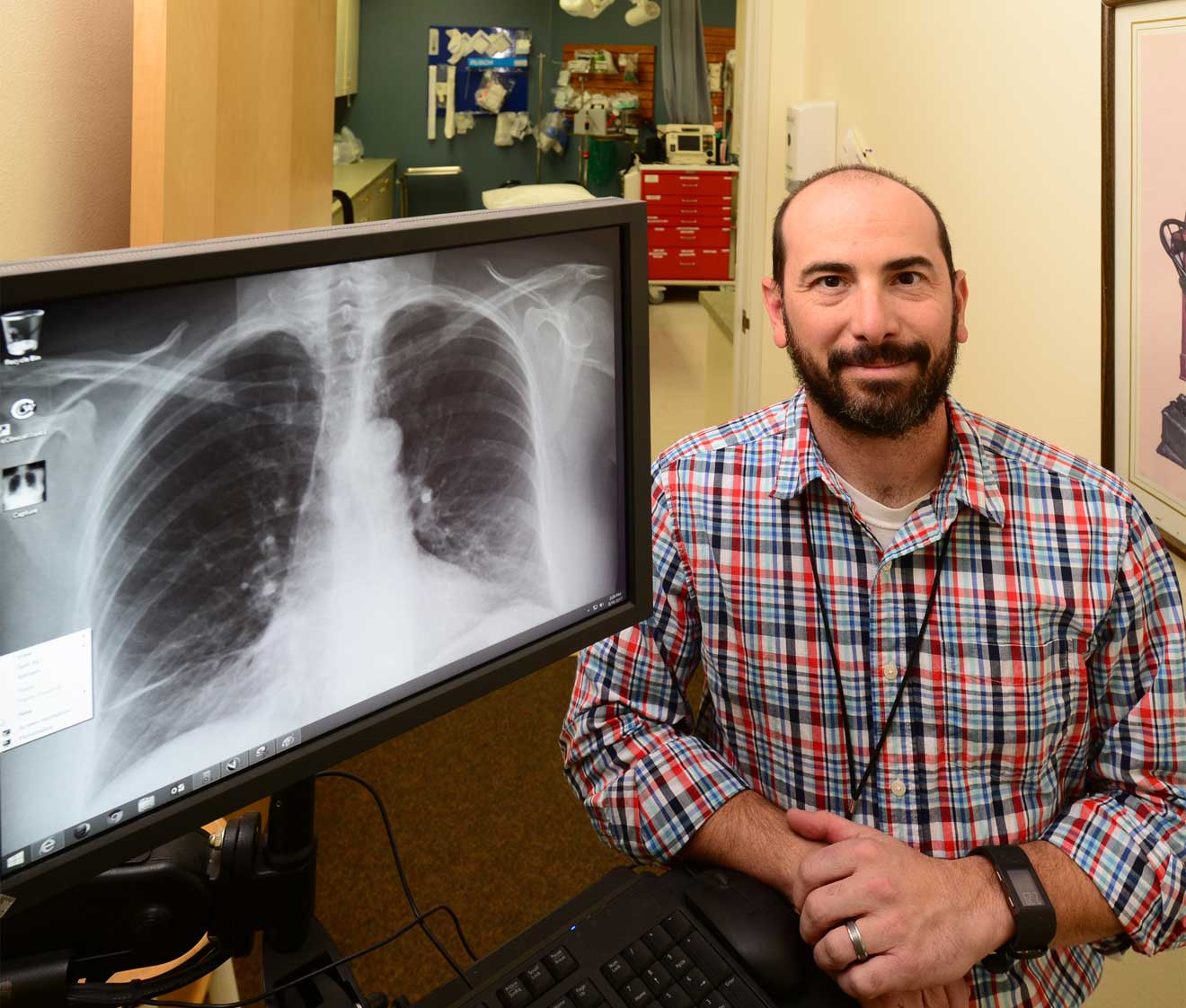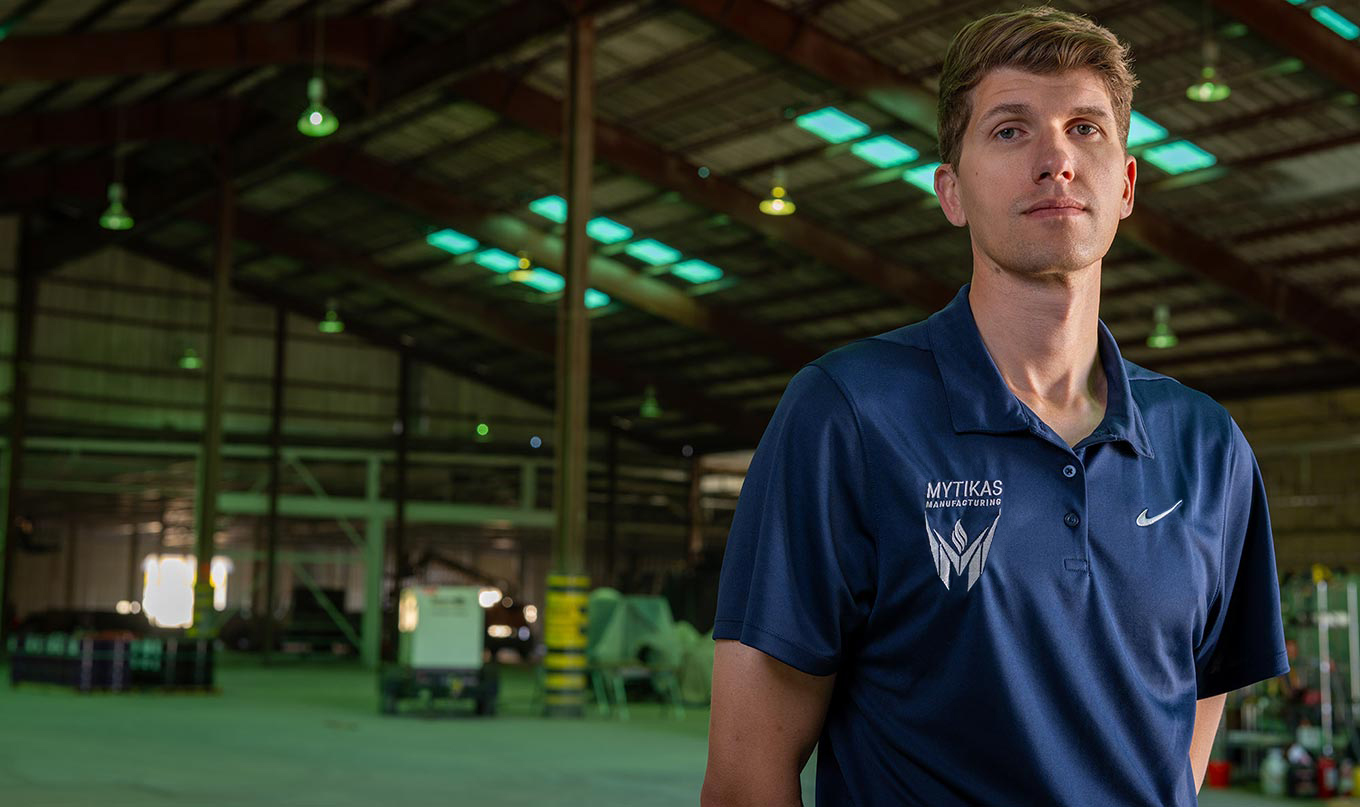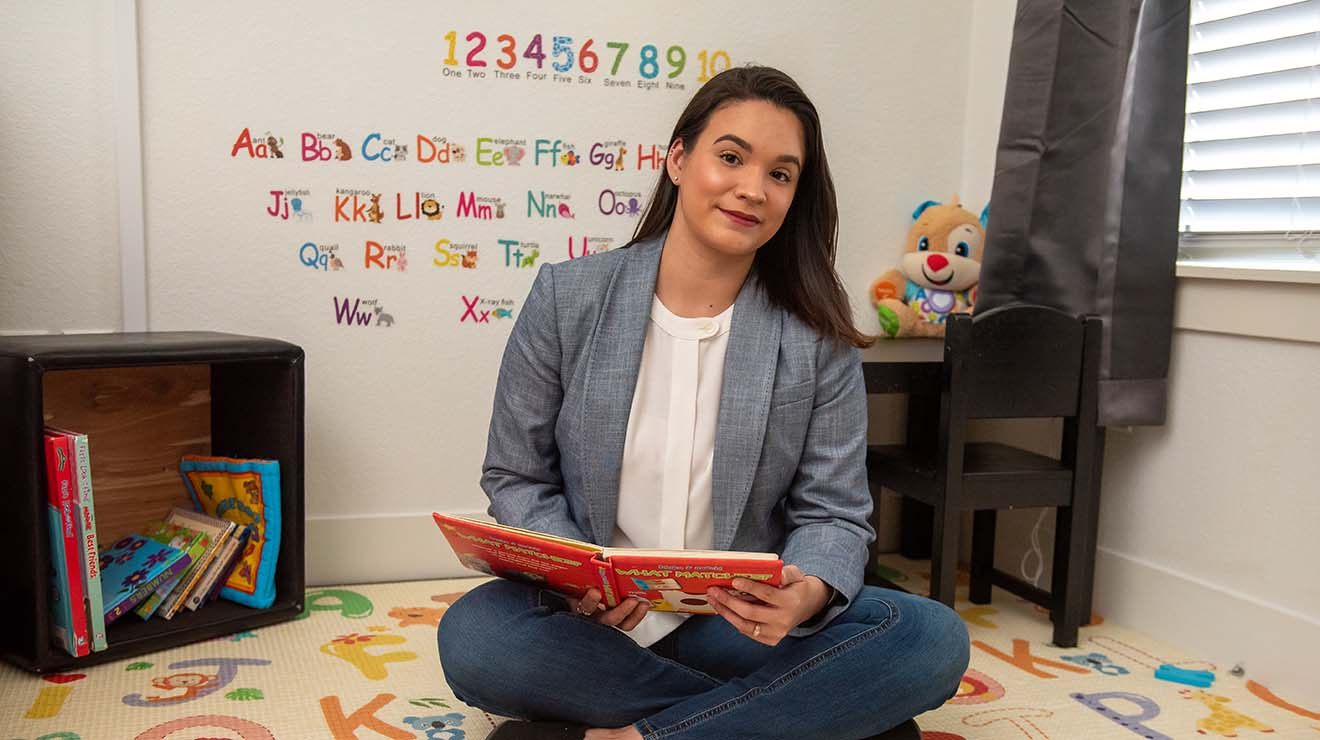In Colorado’s San Luis Valley, the disparity in the tiny school districts’ costs for internet service are as stark as the looming sand dunes: One school pays nearly $1,900 a month for service slower than broadband; another pays $90 a month for good, high-speed service; still another, $600 a month for lightning-fast access.
In Norwood, Colo. on the Western Slope, population 518, Mayor Kieffer Parrino endures the regular ritual of rebooting his slow home internet connection when websites aren’t loading and his daughter’s homework is delayed by hours.
And at the Uncompahgre Medical Center, serving Norwood’s San Miguel County, when a windstorm messes with the wireless internet connection in the middle of a patient’s imaging procedure, slowing transmission and access to an urban-based radiologist, medical providers say they are suddenly on their own and “do our best.”
All over Colorado’s mountain west, civic and business leaders say they hear this from entrepreneurs looking to relocate or start businesses, or professionals who would like to come and work remotely: No move—and no accompanying economic boon—until the internet broadband gets improved.
Colorado state and regional leaders are ramping up a renewed push to get acceptable broadband speeds everywhere in the state they currently are not: 23 percent of rural residents lack broadband access, according to the Colorado Broadband Data and Development Program. That’s slightly better than the national average for rural areas, and an improvement from two years ago when 32 percent lacked access, but still leaves hundreds of thousands of Coloradans behind in the race for economic and academic progress.
Such internet access disparities—added to the list of others faced by rural Coloradans, from lower incomes than urban areas, to reduced access to health care services, to food deserts and insecurity, to gaps in transportation and quality housing stock—contribute to poor health outcomes, according to research compiled by the Rural Health Information Hub, a nonprofit funded by the Federal Office of Rural Health Policy.
The technology gaps can also exacerbate racial and economic inequities. A Pew Research Center analysis of U.S. Census data found that “some 5 million households with school-age children do not have high-speed internet service at home”—many in rural areas—and that “low-income households—and especially black and Hispanic ones—make up a disproportionate share of that 5 million.”
The Pew analysis found that only 8.4 percent of U.S. households with annual incomes over $50,000 lacked high-speed internet—yet among households earning under $50,000 annually, nearly four times as many households (31.4 percent) didn’t have broadband. Additionally, in terms of households with broadband access, “lower-income black and Hispanic households with children trail comparable white households with children by about 10 percentage points,” the Pew researcher noted, adding that having broadband at home is “strongly associated” with higher levels of educational attainment.
“Broadband or the absence of broadband are foundational to the well-being of any individual, frankly,” said Tony Neal-Graves, a former Intel executive appointed this spring as executive director of a new office of broadband services in the Colorado Governor’s Office of Information Technology.
“It’s not just so you can watch Netflix—it’s a matter of, you can’t do your homework in your rural area,” said Ouray County Commissioner Ben Tisdel. “Increasingly, that’s how the schools operate,” he said, as one example of how fast internet service has become as much a utility as a connection to the electrical grid was in the 1900s.
“We feel both remote and isolated from what services the majority of people in the state get,” Tisdel said. “It’s something that people in Aurora or Douglas County don’t even have to think about.”
With the internet burrowing its way so deeply into education, employment, health care and nearly every other aspect of modern life, those championing rural communities want to keep it from becoming another area where they fall too far behind. Education and income are already linked closely to health and well-being in study after study, including one by University of California, San Francisco researchers analyzing an array of child and adult health indicators.
“Those with the lowest income and who were least educated were consistently least healthy,” the researchers concluded.
Broadband internet use “has in many ways become central to participation in society,” according to a 2015 report on inequity in broadband access for low-income Americans, including in rural areas where average incomes are below those of urban residents. For the unemployed alone, reliable service is crucial, said the Center for Budget & Policy Priorities, noting that nearly all government agencies and more than 80 percent of the Fortune 500 companies now use online job applications.
And while Colorado may be better off than some states with large rural areas, places with little to no broadband are notorious enough to garner national attention. In July, the number-crunchers at the FiveThirtyEight journalism site analyzed all U.S. counties for broadband usage, and found that southern Colorado’s Saguache County was “at the bottom.” Only 5.6 percent of adults had broadband in Saguache, by their estimates.
Despite the speed gaps, leaders in many parts of Colorado sound optimistic about the chances for progress in the next few years. Frustrated by perceived indifference from major carriers who lag in upgrading connections, public officials have landed grants and contracts to build the so-called “middle miles” into their communities—the cable links from backbone networks into a local hub. They will wire major local institutions such as schools, libraries and businesses, while setting up neutral connecting points for private internet service providers to improve the “last-mile” connections to individual homes and businesses.
Such efforts, in turn, appear to have spurred private industry to move faster. Smaller companies like Forethought.net are turning on faster signals in places like Silverton, and CenturyLink announced recent broadband deliveries in rural Colorado boosted by $26.5 million a year in federal grants.
“The story I hear over and over is that there are a lot of people considering moving to smaller communities for quality-of-life issues. A lot of those people can have mobile jobs now, but they need a place where the internet is fast and reliable,” said Jawaid Bazyar, owner and president of Denver-based Forethought.net.
“That’s what constituents are telling town leaders, and town leaders are telling us. It’s not just that it’s a nice thing to have—it’s that it’s critical to these communities, and as important as electricity.”
Rural leaders sometimes bristle at broadband debates that make it sound like all they are missing with slower internet speeds is binge-watching “Game of Thrones,” or one-click ordering on Amazon. Here are a few of the crucial business, institutional and personal connections they cite as growing needs for faster service:
- Academic requirements at local schools and community colleges, in an era when nearly all courses require an internet link for statewide testing, individual research and assignment tracking. Broadband is the only way to properly take some state-mandated tests, while it’s also crucial for anything from watching a research documentary to reasonably fast searches of academic journal databases. Better connections are also needed for college admissions work, course registration, video feeds for distance learning and other needs that have become basic components of education at all age levels.
- Business-to-business relationships, including parts ordering at auto and other service stores, credit card processing at nearly any retail outlet, adequate downloads of photos and other features on tourism websites, and professional services such as law databases. Neal-Graves learned of a Western Slope drone-photography company with booming business that must drive to Grand Junction simply to upload files.
- Ranching and farming increasingly require fast, reliable internet connections for anything from auction prices for farm animals and commodities, to satellite connections for weather reports and GPS-guided field equipment.
- Government services—both at home or from regional federal buildings—with many rural residents relying on access to online portals to utilize Medicare, Medicaid, Social Security, Social Security Disability, Veterans Affairs or other benefits.
- Medical services and records. The challenges here reside at multiple stops in the information pipeline. Regional medical offices and hospitals now depend on electronic records and remote reading of medical imaging by city-based specialists; waiting for a download while a patient is opened up in a rural operating room is an obvious inequity. Fast making progress, meanwhile, are wearable monitoring technologies for the elderly or chronically ill, and remote monitoring via broadband has already become vital for home-based medical services.
The gaps in Colorado broadband service make for crazy lines on a map, given the spotty development of fiber lines by phone providers, regional electric cooperatives and government-sponsored networks. The town of Ophir still relies on dial-up service, for example, while Ouray’s schools landed faster service through the troubled EAGLE-Net alliance. (EAGLE-Net was a quasi-governmental agency charged with bringing high-speed links to remote school districts using federal grants, but fell short of its goals as money ran out.)
Nationwide, about 39 percent of the U.S. rural population—comprising 23 million people—lack access to broadband. The Federal Communications Commission defined modern broadband as 25 megabits per second (Mbps), a speed necessary for smooth watching of video on more than one household device, for example. Urban areas now often boast 100 Mbps and “gigabyte” service is becoming more common, while Colorado rural areas often complain that service sold at even 10 Mbps actually comes in at 3 or 4 Mbps.
Meanwhile, only 4 percent of urban residents nationwide now lack broadband internet access, according to a June story in The Wall Street Journal.
Neal-Graves said the current statewide broadband access rate of about 77 percent means 125,000 to 160,000 homes in rural parts of Colorado can’t get a fast link. He has spent his first few months as chief of Colorado’s broadband effort traveling the state and identifying potential sources of buildout money. He said the state goal is to extend access to 85 percent of rural residents by 2018, and to 100 percent by 2020.
Accepting that broadband service is a form of public utility means pushing for government involvement in funding the backbone infrastructure in remote or isolated areas, Neal-Graves said. Federal and state funds helped take phone lines to all corners of the United States, and “we just have to do the same thing with broadband,” he said. “It boils down to a cost issue, and it’s very difficult for private enterprise to do the math and make it work.”
Rural Colorado leaders say their connectivity problems are not nearly as simple as FiveThirtyEight’s attention-getting stat about Saguache County. Some parts of the San Luis Valley, for example, have quite good broadband connections, said Kevin Wilkins, executive director of the San Luis Valley Development Resources Development Group, which promotes economic progress in the area.
But the two main issues are “both speed and cost,” Wilkins said, pointing out the differences in what school districts pay, many of which are already stretched thin by lack of local resources.
“Broadband is key to delivery of rural parity,” Wilkins said. “If I’m going to attract a workforce with more urban expectations of service, we have to have robust connectivity. Does it have to be equal to the city? Probably not, that’s not realistic. But it has to be acceptable.”
As the holder of legacy landlines around the state, CenturyLink takes much of the criticism for unequal rural service. Yet while CenturyLink still has the reputation of a monopoly, it no longer has the power to charge whatever it wants to raise construction funds, said Guy Gunther, vice president of Colorado operations for the company.
“Yes, we do sense that frustration, and quite honestly we feel it as well,” Gunther said. “When we look at density and distance, and terrain, the cost to build out is really the limitation.”
The obstacles left to meeting those goals blow back and forth in the high-desert winds of sprawling San Miguel County. Home to Telluride and its reputation of ski resort affluence on its eastern edge, the county also stretches west to the Utah border and includes struggling former mining towns like Norwood and Ophir.
CenturyLink serves Telluride, but its equipment doesn’t deliver reliably fast broadband, residents say; the communities want price competition, and backup when one provider’s lines go down.
“Say you’re being promised 10 Mbps, for 50 to 60 bucks a month, but what you’re really getting is 1.5 or so, and it’s worse when everybody is doing homework or watching movies at the same time,” said Erika Lapsys, donor and strategic initiatives director for the Telluride Foundation. Lapsys and town leaders have long worked to find alternate broadband sources for the area.
There is a set of fiber cables running nearby built by Tri-State Generation & Transmission to connect and monitor power substations. Telluride, surrounding communities, and Region 10, the quasi-governmental agency working on economic development for the six-county area, would like to light up the extra fibers, but the landowners only signed off on right-of-way for electrical uses, not for internet use. It’s been a years-long effort to get all 75 landowners involved to sign an expanded agreement.
In the meantime, Region 10 has used state, federal and local grants to help bring service to the major population centers of Delta and Montrose, with more extensions on the way. The 1,425 residents of Paonia now have access to gigabyte-level broadband service and is already seeing economic development gains as a result, said Region 10 executive director Michelle Haynes.
Montrose is striving to become the first district in Colorado with all STEM-focused schools, while Delta has repositioned its vocational school as Technical College of the Rockies. High-speed service is vital to both efforts, Haynes said. “Communities that are left with this digital inequity, I don’t know how they’re going to make it through,” Haynes said.
While praising Region 10 and other partnerships for their work on the middle mile in small towns, Neal-Graves said the push for broadband equity will require more hard work at the state legislature. The Department of Regulatory Agencies, Department of Local Affairs and other partners have helped fund one-time contributions for about $22 million in recent buildout, but that’s only about “10 percent of what’s really needed to solve the problem” statewide, Neal-Graves said.
CenturyLink is using tens of millions of dollars in federal telecommunications grants to extend 10 Mbps service, Gunther said. More than 14,000 homes were given access in 2015 and 2016, with another 13,000-plus existing customers seeing speeds increased, he said.
Scott Bookman, executive director of Uncompahgre Medical Center and its weather-challenged connection to reliable broadband, echoed other regional leaders when he assessed the gaps as a problem getting close to a solution. Small towns are cooperating and state leaders are listening, he said.
One of the first things Uncompahgre would do with higher speeds, Bookman said, is to begin using a remote transcriber to join patient-provider encounters by video link, to take notes and update medical records. City hospitals now often have an extra person in the exam room for that; smaller hospitals with good bandwidth can do it by a video connection.
“Every decision we make seems to be about whether we can bring more telecommunications services to the building,” Bookman said. “I think the community is really rallying around this issue. It’s a long battle. You can’t take these things for granted out here.”




